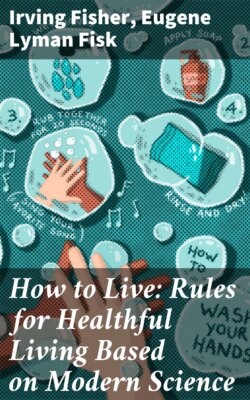Читать книгу How to Live: Rules for Healthful Living Based on Modern Science - Irving Fisher - Страница 23
На сайте Литреса книга снята с продажи.
HOW TO LIVE
INTRODUCTION
ОглавлениеTable of Contents
The purpose of the Life Extension Institute embraces the extension of human life, not only as to length, but also, if we may so express it, as to breadth and depth. It endeavors to accomplish this purpose in many ways, but especially through individual hygiene.
Thoroughly carried out, individual hygiene implies high ideals of health, strength, endurance, symmetry, and beauty; it enormously increases our capacity to work, to be happy, and to be useful; it develops, not only the body, but the mind and the heart; it ennobles the man as a whole.
Medieval Ideals
We in America inherit, through centuries of European tradition, the medieval indifference to the human body, often amounting to contempt. This attitude was a natural outgrowth of the theological doctrine that the “flesh is in league with the devil” and so is the enemy of the soul. In the Middle Ages saintliness was often associated with sickliness. Artists, in portraying saints, often chose as their models pale and emaciated consumptives.
We are beginning to cut loose from this false tradition and are working toward the establishment of more wholesome ideals. It is probably true, for instance, that the man or the woman who is unhealthy is now handicapped in opportunities for marriage, which may be considered an index to the ideals of society.
The Present Health Movement
A great health movement is sweeping over the entire world. Hygiene has repudiated the outworn doctrine that mortality is fatality and must exact year after year a fixed and inevitable sacrifice. It aims instead to set free human life by applying modern science. Science, which has revolutionized every other field of human endeavor, is at last revolutionizing the field of health conservation.
Medical Practise
The practise of medicine, which for ages has been known as the “healing art,” is undergoing a gradual but radical revolution. This is due to the growing realization that an ounce of prevention is worth a pound of cure. As teachers and writers on hygiene, as trainers for college athletes, as advisers for the welfare departments of large industrial plants, and in many other directions, physicians are finding fields for practising preventive medicine. Even the family physician is in some cases being asked by his patients to keep them well instead of curing them after they have fallen sick.
Furthermore, the preventive methods of modern medicine are being applied by the people themselves, as witness the great vogue to-day of sleeping out of doors; the popularity, not always deserved, of health foods and drinks; the demand for uncontaminated water supplies, certified milk, inspected meat and pure foods generally; the world-wide movement against alcohol, and the legislation to correct wrong conditions of labor and to safeguard the laborer.
Labor itself to-day is being held in honor, and idleness in dishonor. Ideals are being shifted from those of “leisure” to those of “service.” Work was once considered simply a curse of the poor. The real gentleman was supposed to be one who was able to live without it. The king, who set the styles, was envied because he “did not have to work,” but had innumerable people to do work for him. His ability to work, his efficiency, his endurance, were the last things to which he gave consideration. To-day kings, emperors, presidents are trying to find out how they can keep in the fittest condition and accomplish the greatest possible amount of work. Even among society women, some kind of work is now “the thing.”
